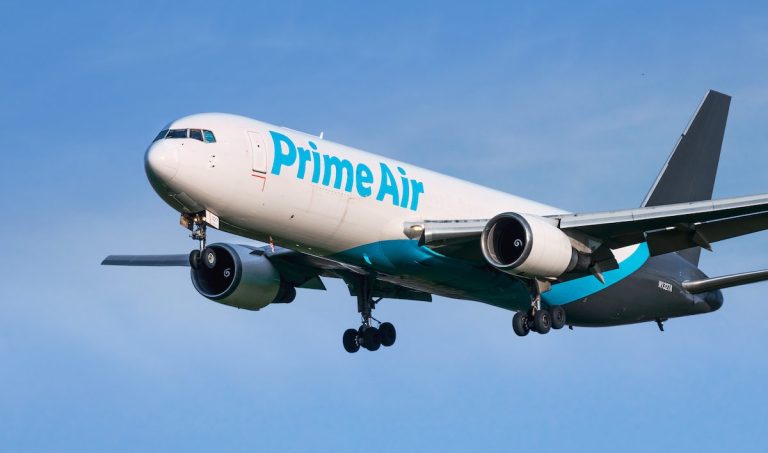Report: Amazon Air Has Too Much Cargo Capacity as Demand Slows

Amazon Air is reportedly trying to sell excess air cargo capacity amid slowing consumer demand.
According to a report by Bloomberg, which cited unnamed sources, Amazon has hired executives with a background in marketing cargo space for airlines, including experience filling empty planes coming back from Hawaii with pineapples, or loading jets returning from Alaska with salmon.
Amazon has not responded to a PYMNTS request for comment.
Current economic conditions haven’t altered Amazon’s long-term plans for Amazon Air, according to the report. However, another person told the Economic Times that Amazon is under increased pressure to make money from the empty space on its planes as the company searches for ways to increase profits as revenue growth slows.
September saw reports that Amazon Air’s growth was slowing as well. Data from the Chaddick Institute for Metropolitan Development at Chicago’s DePaul University showed the company’s freighters making an average of 194 flights per day in September.
That’s a 3.8% increase from March and the smallest increase since the institute began logging Amazon flight traffic in May 2020.
“Amazon is making significant adjustments,” Joseph Schwieterman, the institute’s director, told Bloomberg at the time. “The company apparently was overly optimistic about its need to grow its supply chain so rapidly at the height of the pandemic.”
Earlier this month, Amazon CEO Andy Jassy told an audience at The New York Times’ Dealbook conference that his company was forced to make decisions to try to meet a boom in demand early on in the pandemic and to “go much faster” than it ever imagined.
“We built a physical fulfillment center footprint over 25 years that we doubled in 24 months,” Jassy said, admitting that Amazon recognized that it could be overbuilding but went ahead with its plans nonetheless.
“It was hard for us to imagine what ‘21 was going to be like, let alone ‘22, but we decided that we were going to shade on the side of consumers and sellers who didn’t want to be constrained,” he said.
Amazon has since closed several of its warehouses, while laying off thousands of employees. The company announced in November it was eliminating 10,000 positions. Focused primarily on the company’s devices division, it was Amazon’s largest round of job cuts to date.
Two days later, Jassy told employees the layoffs were likely to stretch into 2023. Earlier this month, the company reportedly began rescinding job offers in its retail organization, which includes the Amazon website, Amazon Prime, Amazon Go, Whole Foods, private-label products, and other retail operations.
For all PYMNTS retail coverage, subscribe to the daily Retail Newsletter.